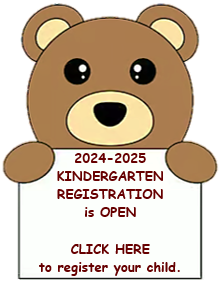Disabilities Defined
Disabilities Defined
When the Planning and Placement Team (PPT) suspects a disability is impacting a student's ability to succeed in school the following are the disability categories they consider when designing evaluations. Upon completion of the evaluation the team must determine if the student has a disability and whether or not specific instruction is required.
A pervasive developmental disability significantly affecting verbal and nonverbal communication and social interaction, generally evident before age three, that adversely affects educational performance. Characteristics of autism include irregularities and impairments in communication, engagement in repetitive activities and stereotyped movements, resistance to environmental change or change in daily routines, and unusual responses to sensory experiences.
Concomitant hearing and visual impairments, the combination of which causes such sever communication and other developmental and educational programs that they cannot be accommodated in special education programs solely for learners who are deaf or blind.
A measurable hearing impairment which, with or without amplification, impairs linguistic processing and adversely affects educational performance. Included within the definition are students who are either hard of hearing or deaf.
A disorder in one or more of the basic psychological processes involved in understanding or in using language, spoken or written, which disorder may manifest itself in the imperfect ability to listen, think, speak, read, write, spell, or do mathematical calculations.
Significant limitations both in intellectual functioning and adaptive behavior as expressed in conceptual, social and practical adaptive skill deficits.
A combination of identifiable disabilities (ex: deaf/blind)
A severe orthopedic impairment which adversely affects a student's educational performance. The term includes impairments caused by a congenital anomaly, impairments caused by disease, and impairment from other causes, but does not include a temporary condition.
Limited strength, vitality or alertness, due to a chronic or acute health problem such as a heart condition, tuberculosis, rheumatic fever, nephritis, asthma, sickle cell anemia, epilepsy, which adversely affects the learner's performance.
A communication disorder which adversely affects the child's educational performance. Impaired speech is characterized by difficulties in processing language at the level of phonology, morphology, syntax and semantics both in encoding and decoding tasks, which difficulties affect spoken, read and/or written forms of language.
A student having acquired an injury to the brain caused by an external physical force, resulting in total or partial functional disability or psycho-social impairment, or both, that adversely affects a child's educational performance. The term applies to open or closed head injuries resulting in impairments in one or more areas, such as cognition, language, memory. attention, reasoning, abstract thinking, and information processing.
A measurable visual impairment, which even after correction, continues to adversely affect a student's educational performance.
A psychological condition manifesting in one or more of the following characteristics over a long period of time and to a marked degree that adversely affects educational performance (inability to learn, inability to build or maintain satisfactory interpersonal relationships, inappropriate types of behavior or feelings under normal circumstances, a general pervasive mood of unhappiness or depression a tendency to develop physical symptoms or fears associated with personal r school problems).

